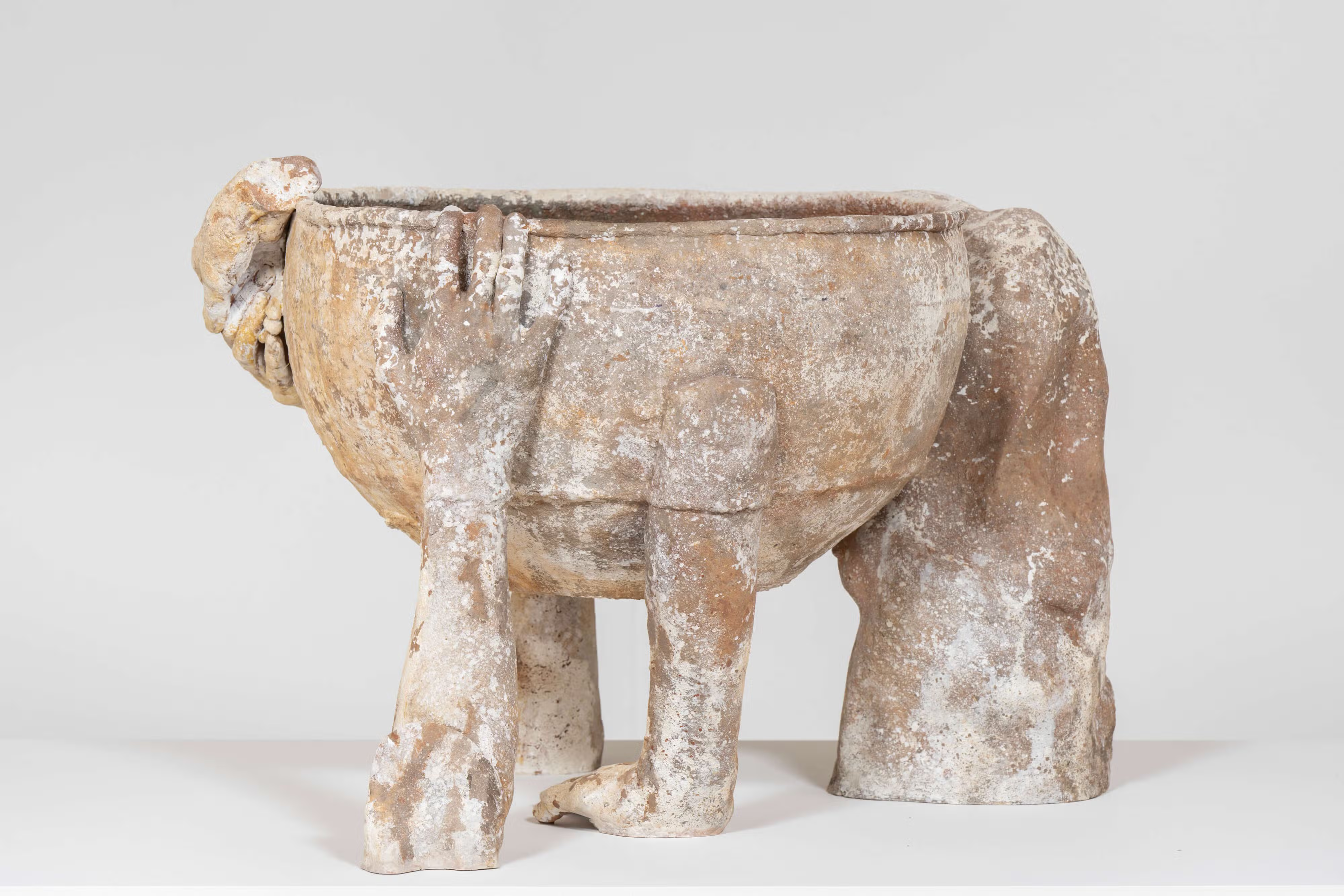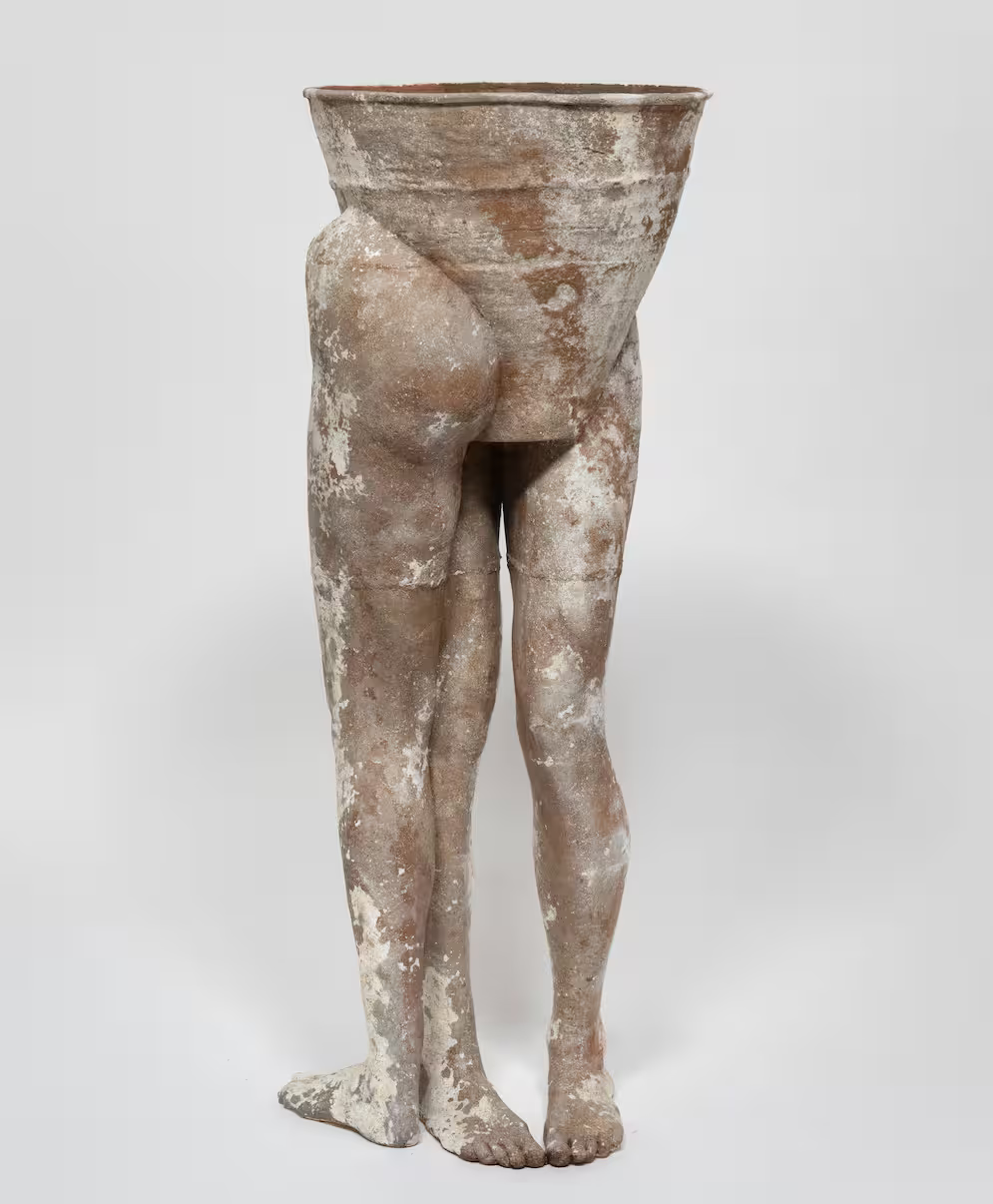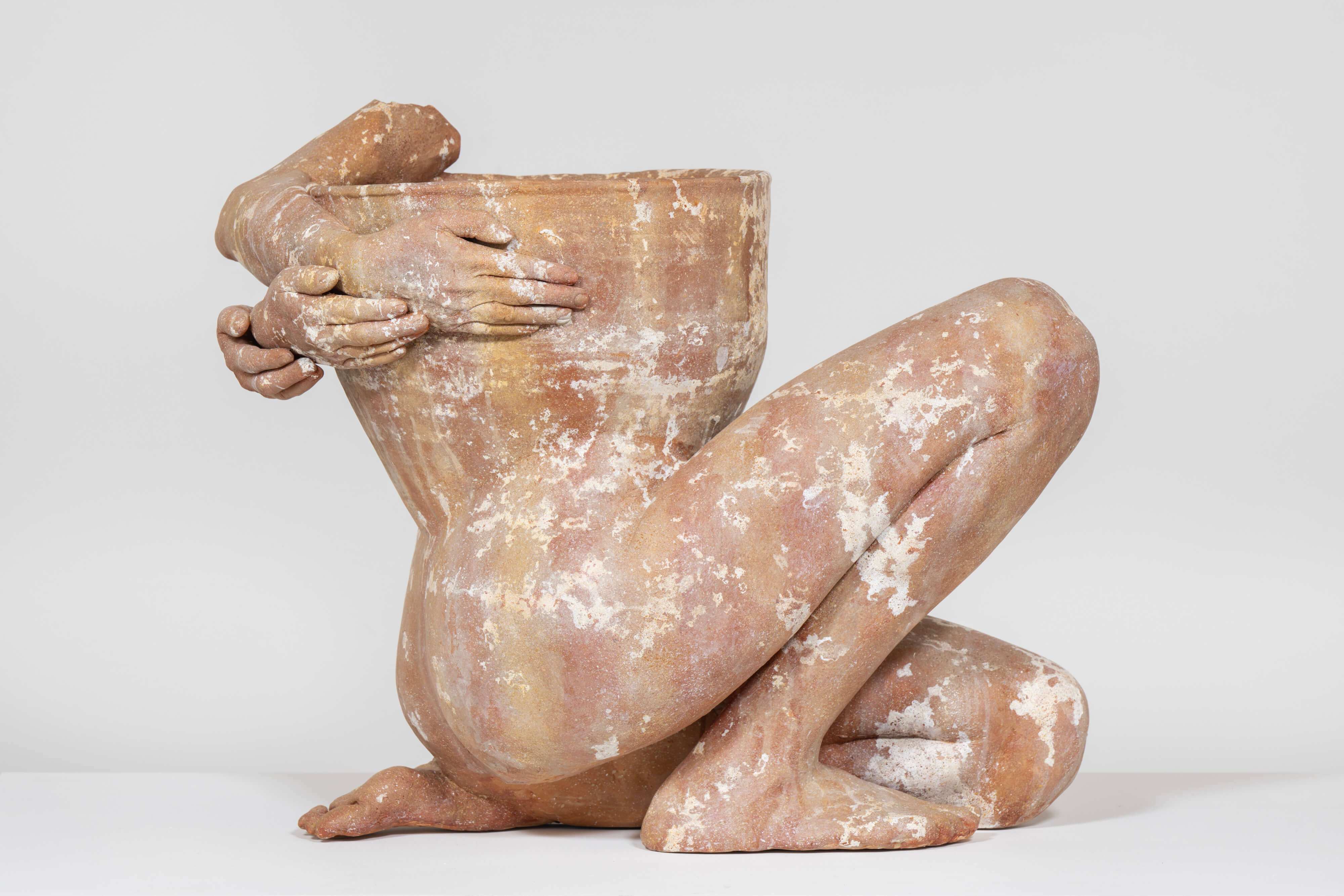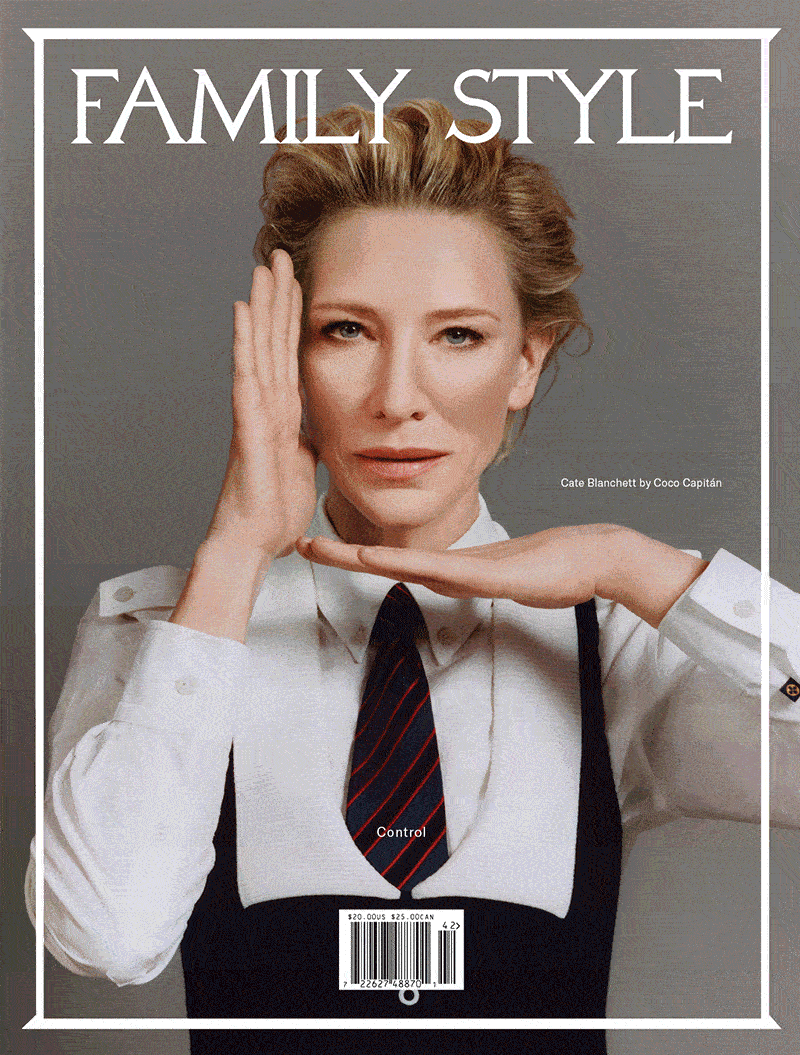
Clementine Keith-Roach, I is another, 2024. Image courtesy of the artist Ben Hunter Gallery, and P·P·O·W.
On the second floor of P.P.O.W Gallery, Clementine Keith-Roach walks around her sculptures that have just been uncrated for her first solo show with the gallery.“It's always a bit of a relief,” the artist tells me, “seeing them again after sending them off.” The six cast sculptures, part of “New Statue”, which runs through December 21 at the New York gallery, were shipped in from her studio in Dorset, United Kingdom, where she lives and works. “I go through such an intense process when I’m making them,” she explains. “So I have a bit of maternal protection over them when I’m away from them.”
Keith-Roach’s process is a laborious, meticulous, and fragile one, in which she takes the casts of her own body and those of close friends or family members. Using the casts as her camera, she replicates intuitive gestures her subjects’ bodies make in moments of free-willed movement. She then merges these forms with antique vessels and uses trompe l’oeil painting techniques to match the weathering paint of the urn. In replicating the ruinous texture, she unifies the old and new into one anachronistic sculpture made of terracotta and resin clay.

Clementine Keith-Roach, No one, 2024. Image courtesy of the artist Ben Hunter Gallery, and P·P·O·W.
Keith-Roach began casting when she was pregnant, eight years ago. The artist viewed herself as somewhat of a vessel during that time. “It's terrifying the way that a mother's body so quickly becomes secondary to the body she is holding,” she shares. This theme of “otherness” is ever-present in her works. “Casting has a sacrificial quality to it,” she says. “You give your body over, and then it becomes something else, like a snake shedding skin.”
Maternity takes on multiple meanings for the artist. Her show’s title is derived from Sylvia Plath’s 1961 poem, Morning Song, which portrays a woman navigating motherhood for the first time, along with the emotional complexities of meeting the newborn she’s created. Keith-Roach leans into the self-effacing interpretation of the poem. “I'm not just thinking about motherhood as in my own experience of being an actual mother, but more like mothering as a political act. Care as a political act. The ‘maternal,’ is something that nurtures and brings forth another being.”
While pointing out the layers of limbs attached to her sculptures, Keith-Roach reminds me of an ideology she and I seem to share: That humans are not made to be individualistic, but are instead the culmination of loved ones, friends, colleagues, and strangers we encounter. The sculpture I is another, 2024, depicts two lower bodies joined together by a wrapped arm. "We can not pretend that we move through this world solely as individuals,” she says.
To address this collective principle and play on the contradiction of the word “statue", Keith-Roach uses a lowercase “s” in the title to knock down a typically idealized medium. Her statues are not supercilious, but rather vulnerable and purposely weathered. They don’t represent a god or a hero—they are placeholders for a future of possibilities. The piece Herm, 2024, uses the casts of the artist’s own leg, intertwined with the legs of a close friend. The weathered casts are joined by a foundational vessel, purposely left open, and waiting to be filled with meaning.

Clementine Keith-Roach, Herm, 2024. Image courtesy of the artist, Ben Hunter Gallery, and P·P·O·W.
The world is gone, I must carry you, 2024, is kneeling on one leg with three arms wrapped around it. “I wanted to break up the fact that it felt like one body,” she says, ”so I added an arm and then added another, and another.” Her intuitive process disrupts any sculpture that becomes too well mannered. The piece takes its title from “The Great Glowing Vault” by the poet Paul Celan. “There's a sense in the poem of a world ending and a new world beginning. And that new world you’re being carried into is one of tactility and care.” There is an enigmatic quality to the strange world Keith Roach’s statues come from, but possibilities of optimism, and refuge though nurturing arise from her anthropomorphic vessels.
Clementine Keith-Roach: “New Statue” is on view through December 21, 2024, at P.P.O.W Gallery at 390 Broadway, 2nd Floor, New York, NY 10013.













.avif)

